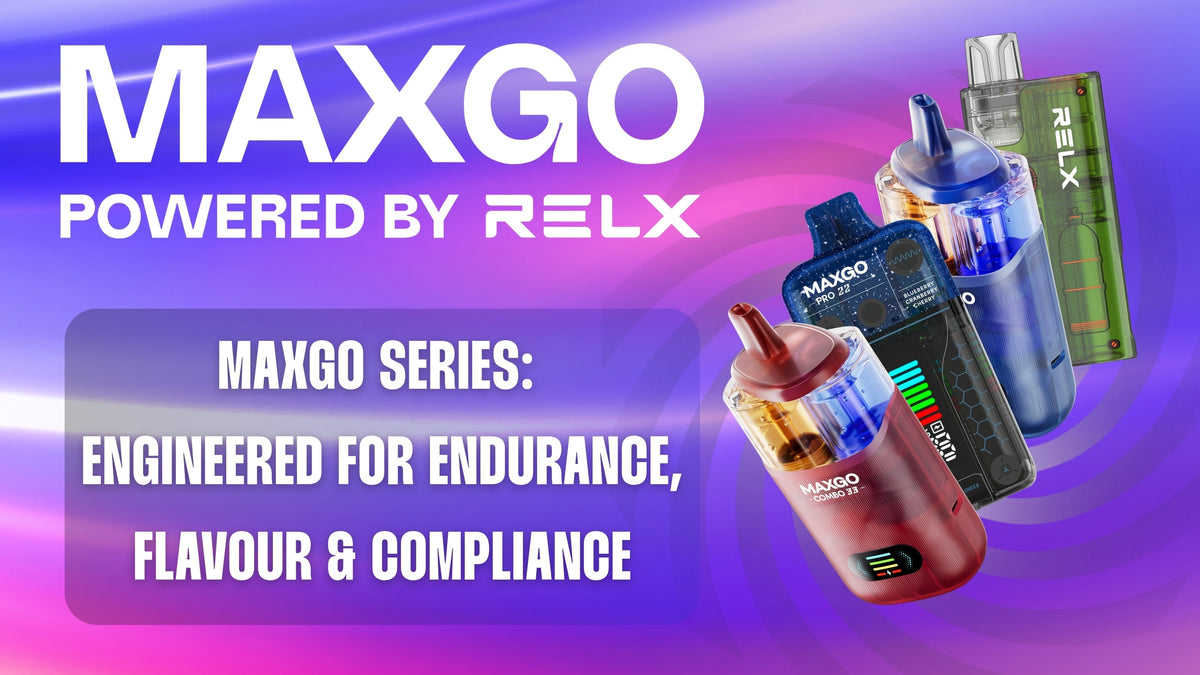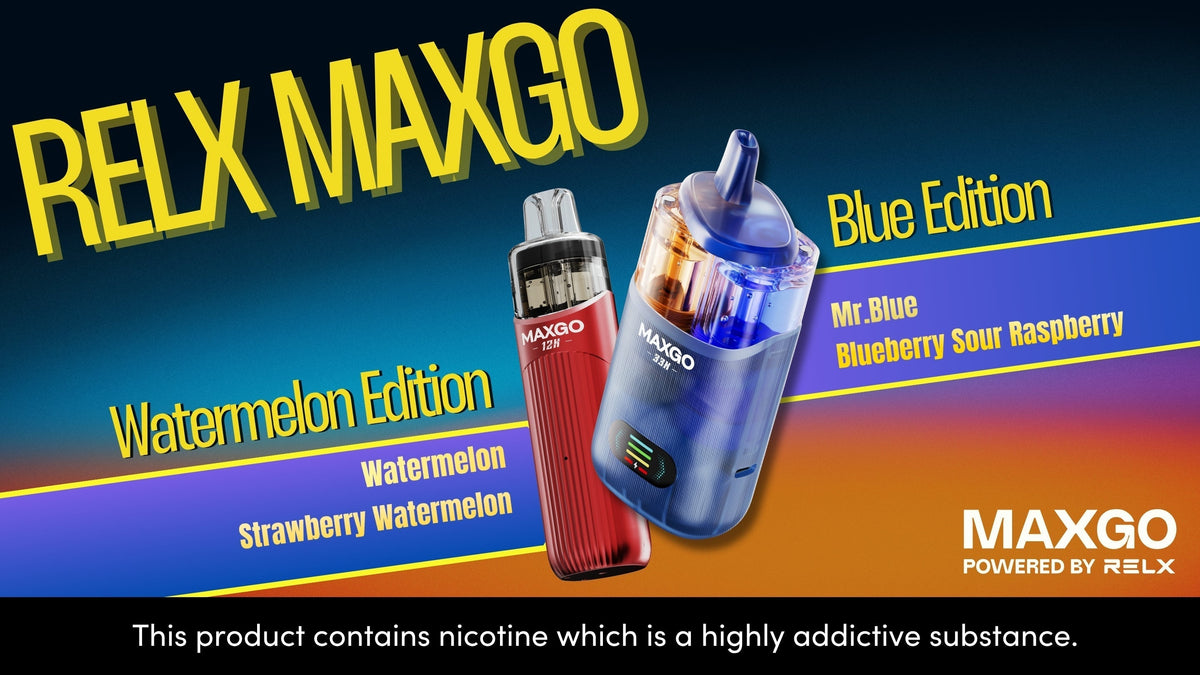What is Vape Juice?
Vape juice, also called e-Juice or e-liquid, refers to the liquid product used in vaporizers and electronic cigarettes to create vapour. The vaporizer heats the vape juice to between 200 and 400 degrees celsius and then turns it into vapour. Inhaling the vapour gives you the flavour you want.
Vape juice exists in a wide range of flavours to suit different consumer preferences, including nicotine and zero nicotine options. However, not everyone knows the ingredients in vape juice.
So, if you’re wondering, “what is vape juice made of?” We’re breaking down the ingredients below.
What are the ingredients in vape juice?
Vape smokers need to know the content they inhale, and that includes what is in vape juice.
Vape juice ingredients include:
- Propylene Glycol (PG)
- Vegetable Glycerin (VG)
- A mix of both PG and VG
- Nicotine (but not always)
- Food-grade flavouring
Propylene Glycol (PG)
PG is one of the main ingredients of vape juice. It is a lab-made substance used to distribute flavouring evenly in the liquid. PG is an alcohol with a faint sweet taste, though not enough to be used as a sweetener. It is a humectant that is colourless and odourless and is used to create a strong vapour. It is also used in many products, including pharmaceuticals and food products, to keep them moist.
PG in vape juice enhances flavours and leaves a strong taste in the back of the throat.
It is also used in antifreeze. Some people think that vape juice contains antifreeze, which is a false belief. PG is just one ingredient in antifreeze due to its versatility and it is non-toxic and safe for children and pets.
PG is used in e-juice because it is a thin liquid, making it easier to fill and refill the atomiser. Its thin nature makes vape juice create less build-up and gunk on your vaping kit coil. PG absorbs heat fast, meaning you can start vaping quicker once you switch on your vape; hence, the vapour feels warmer.
While some vapers may experience allergies from PG-based vape juices, . PG is generally recognized as safe (GRAS) by the US Food and Drug Administration. PG-based vape juices typically produce a less dense vapour so your clouds will be less visible. For the small percentage of people sensitive to vape juice with high percentage PG, they can switch to one with a higher percentage of vegetable glycerine (VG).
Vegetable Glycerine (VG)
Like PG, vegetable glycerin (VG) is a non-toxic, colourless, and odourless liquid. It has a tang of sweet taste. You can tell it apart from PG because it is very thick and viscous, which is why high VG vape juices are too thick for older types of atomizers. VG is also an ingredient in the food industry as a sweetener; it’s also used in different kinds of medicines.
VG in vape juice creates large clouds of vapour and tends to be easier on the throat. It also delivers less flavour intensity. Its sweetness makes the final product taste more sugary compared to PG. Its downsides are that it creates gunk accumulation on the coil, and it needs more power to reach the optimal temperature to be ready for vaping.
Overall, vegetable glycerin (VG) is generally considered safe. However, as with every other product, VG may not be suitable for you if you are allergic to it.
PG/VG Ratio in Vaping Juice
Now that you know what VG and PG are in vape juice, you can choose products with your ideal PG/VG ratio. E-juices often come with a mix of both of these ingredients. This combination means that you can select a vape juice with a balance of throat hit, flavour intensity, and cloud density.
When choosing the ideal ratio, consider whether you are sensitive to PG. If your vaporizer is old or typically miniature, you may want to avoid high content VG. For example, 70% of PG e-juice is sufficient in standard e-cigs for beginner vapers. 50/50 blend of PG and VG is generally used with higher performance vapes with high atomizer resistance levels. It is perfect if you want some cloud and a strong flavour hit.
If you are unsure of the ratio to opt for, choosing a combined e-juice will help you discover the best products for you.
Nicotine
Most vape liquids include nicotine as an ingredient. It is derived from tobacco plants or from synthetic sources. Nicotine improves the flavour of the vaporizers without using tobacco leaves. However, it is naturally addictive.
There is varying nicotine content in e-juice. The nicotine in vape juice is measured in milligrams or as a percentage by volume. For instance, 3 mg per gram of nicotine level is the same as 0.3% nicotine. The amount of nicotine in vape juice should be labeled accurately.
User preferences vary, and the best bit is that you can also opt for no nicotine vaping. You also have different nicotine options should you choose to vape with one.
Generally, flavouring makes up 1% to 10% of the total volume of e-juice. One of the advantages of vaping is the wide variety of delicious flavours. The liquid is a bit tasteless; hence food-grade additives are used to add flavour to it. The flavours are very concentrated, and it does not take much. Their recipes and ratios are similar to basic cooking recipes. For best results. They are tested, finely tuned, and mixed professionally in laboratories.
The source of the flavouring is essential. Some people make their own flavourings with do it yourself (DIY) techniques from the internet. Some vape juice may contain flavours and other ingredients that are harmful to inhale. We recommend sticking to flavours from reputable vape manufacturers.
However, you cannot be fully aware of the flavours' ingredients based on the label. The FDA permits manufacturers to hide select proprietary information — or trade secrets — to maintain their uniqueness in flavours. Therefore, it is advisable to buy e-juice only from reputable brands.
Flavours to Try
For starters, one classic to try is menthol, a cool and fresh flavour that is common for newbies. Since flavours are relatively inexpensive, you can experiment until you find your go-to flavours.
Vanillin is a synthetic compound, which is one of the most popular flavours. It is a regular preference for vapers because of its sweet characteristic. Limonene is a strong flavour that masks the other bitter notes of the other ingredients making it a favourite for many.
Everyone has different palates, so the tangy flavours someone else prefers may not be your taste.
Conclusion
As a vaper, it is crucial to understand all the facts about vape juices. Knowing what vape juice is made of, your preferred nicotine strength and the best PG/VG ratio will give you the best vaping experience.
Also in Vape Knowledge

RELX MaxGo Series Showdown: Which Powerhouse Matches Your Vaping Rhythm?

Beyond Disposable: How RELX MAXGO 33K & 12K Redefine Sustainable Vaping Excellence

How Long Until I Can Vape After Wisdom Teeth Removal?
Vaping after wisdom tooth removal is not recommended, as it can cause complications like dry sockets. Patients should wait at least three days before vaping to ensure proper healing and minimize risks associated with the extraction site.
















